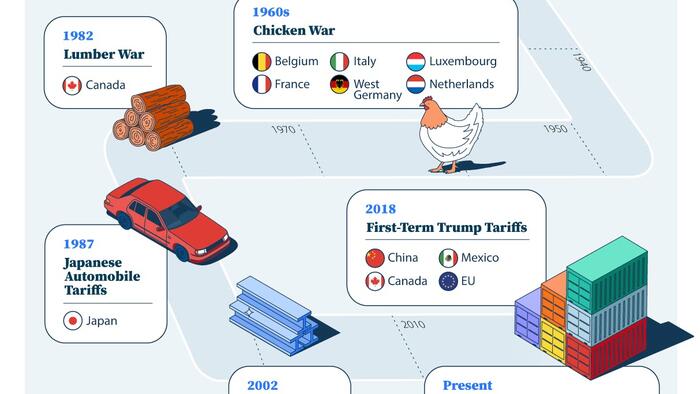


As global policy uncertainty continues to dominate the headlines, maintaining a balanced perspective is crucial. For investors, understanding the broader trade landscape - including where America’s largest trade deficits and surpluses lie - can help identify both emerging risks and overlooked opportunities.
In partnership with New York Life Investments, Visual Capitalist's Julia Wendling breaks down the key players in America’s trade ecosystem - offering a clearer view of the relationships shaping U.S. economic dynamics.
A country’s largest trading partners play a pivotal role in shaping its economic stability, currency strength, and market potential—all of which influence investor sentiment.
For the U.S., trade is concentrated among three key partners: Canada, Mexico, and China. Canada and Mexico, closely tied through the USMCA trade agreement, account for 16.9% and 16.2% of total trade, respectively. China follows at 7.0%.
The remainder of the top 15 trading partners spans Europe and Asia.
Trade imbalances are a frequent flashpoint in economic and political discussions. So, where do the biggest gaps lie?
The largest trade deficits are with China, Mexico, and Vietnam. Notably, the U.S. deficit with China alone ($295 billion) nearly equals its combined deficits with Mexico and Vietnam ($296 billion).
On the other side of the ledger, the U.S. runs trade surpluses with countries such as the Netherlands ($55.5 billion), Hong Kong ($21.9 billion), and Australia ($17.9 billion).
There is also a sizable surplus with South and Central America, totaling $47.3 billion.
The U.S. has a long tradition of using tariffs and other protective measures to support domestic industries—often targeting its top trading partners.
Before the latest round of Trump-era tariffs, the U.S. and Canada clashed in several notable disputes, including the Smoot-Hawley Tariffs (1930), the Lumber War (1982), and the first wave of Trump tariffs in 2018.
In times of heightened uncertainty, clear insights are more valuable than ever. By unpacking the U.S.’s trade relationships and historical context, investors can gain a deeper understanding of potential market impacts—and spot opportunities that may otherwise go unnoticed.
